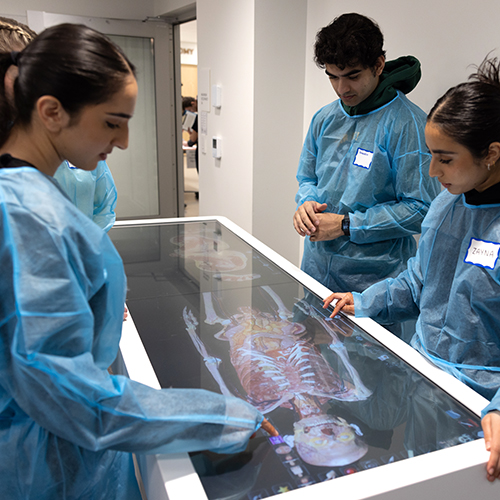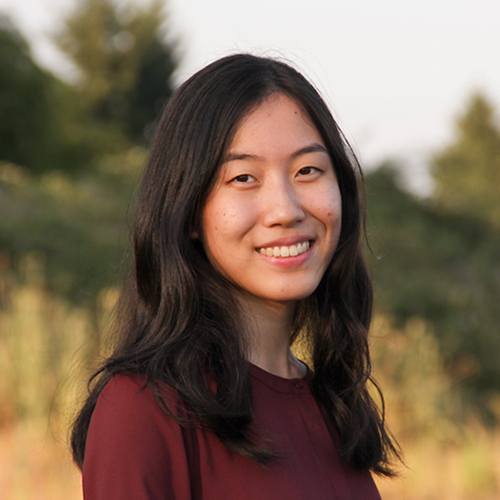Art Levinson (‘72) was twelve years old when Seattle hosted the 1962 World’s Fair. He figures he visited the fairgrounds more than a dozen times that summer. While other kids headed for the rides, he was drawn to the science exhibits, which focused on technology in the twenty-first century.
It seems fitting, then, that Levinson would go on to head Genentech, a biotechnology company known for breaking new ground in science and medicine.
“Almost since I can remember, I’ve been interested in understanding how things work, how things are put together,” says Levinson. “That’s always been a very important motivator for me.”
Levinson was particularly interested in astronomy and figured that would be his major at the UW. Just one problem: at that time, the University had no astronomy program. “So I wandered around my first couple of years, not knowing what I wanted to major in,” he recalls.
Then Levinson read Intelligent Life in the Universe, by Carl Sagan and I.S. Shklovksy, and he knew what he wanted to do. “I’d always been interested in astronomy, cosmology, and the origins of the universe,” Levinson explains. “The first two-thirds of the book were about those types of questions. The last third was a discourse on the requirements for life at a molecular level. To my surprise, I found that to be at least as interesting as some of the physics questions I’d been pondering.”
Inspired by the book, Levinson started taking genetics and biochemistry courses. He remembers one genetics course, taught by Leland Hartwell, that sealed his fate. “Before that course I had vague thoughts that I would go to medical school, but the idea never got me terribly excited,” he says. “After a couple of weeks in Lee Hartwell’s course I said, ‘This is what I want to do. I’m going to be a scientist, and I’m going to do genetics and molecular biology.’”
Again, the UW offered no major in his chosen field. But this time, Levinson spoke with faculty and devised an individual major to meet his needs. He also asked about doing research as an undergraduate, which was almost unheard of those days. “When they asked me what I was interested in, I just said, ‘Cancer would be kind of interesting,’” recalls Levinson.
Soon Levinson was working in Professor John Keller’s lab, studying the differences between normal and cancerous cells. “It all came together—the coursework, the research environment, the support and encouragement I got from just about everybody at the University… it was very exciting,” says Levinson.
After graduating from the UW, Levinson headed for Princeton University, where he earned a Ph.D. A postdoctoral position at University of California at San Francisco followed. That’s where Levinson met Herbert Boyer, a UCSF professor who had started (with Robert Swanson) a fledgling biotechnology company called Genentech. Boyer asked Levinson to join the company.
It all came together—the coursework, the research environment, the support and encouragement I got from just about everybody at the University… it was very exciting.
“I was finishing my postdoc and I thought that maybe I would go to this company for a year or two, learn some of the recombinant DNA technology, and then go back into academia,” recalls Levinson. “At that time, very few respectable scientists went into industry. Most of my academic colleagues thought I was out of my mind. Of course, many are now on Genentech’s scientific board or they are shareholders.”
Levinson’s former colleagues aren’t the only ones investing in Genentech. The company, which has seven marketed drugs and 18 drugs in its development pipeline, now employs 4,000 employees and has annual revenues of $1.4 billion. It trades on the New York Stock Exchange, with the trading symbol “DNA.”
Levinson did not leave Genentech as planned. “I just had a great time,” he says. “There was a tremendous infrastructure set up, which allows scientists to be unusually productive. After a couple of years I thought, ‘Why would I leave?’” Levinson moved up through the company, and was named Chairman and Chief Executive Officer in 1995.
What intrigued Levinson early on and continues to motivate him—besides the research—is the challenge of creating a company that is dedicated to basic research yet able to turn a profit. “The biotechnology industry will typically spend up to 40 percent of its revenues on research and development, while other high tech fields—computers, semi-conductors—spend a fraction of that,” explains Levinson. “We’re still expected to make a profit, so it’s a tightrope we’re walking. Drug development is very expensive, and you’ve got to take risks. In the past few years, I’ve started to feel relatively confident that, with the level of profitability we’ve achieved and with our commitment to the basic science, we have established a new business model, at least for this industry.”
How does Genentech remain profitable despite reinvesting a large portion of its revenues into research and development? Herceptin, a promising breast cancer drug, is one reason. Rituxan, which treats non-Hodgkin’s lymphoma, is another. Both Genentech products have become popular treatments for their respective diseases. These drugs use monoclonal antibodies—specially engineered versions of the body’s own antibodies—to track down and initiate a process that eliminates cancer cells. Genentech was the first company to harness the potential of monoclonals effectively.
“This is at long last applying intelligence to the treatment of cancer,” says Levinson. “It’s not simply screening ten million compounds and finding those that kill all growing cells. That’s been the state of cancer research until the last couple of years. That’s why your hair falls out when you take a chemotherapeutic drug, that’s why your intestinal cells start shedding. Now we’re developing drugs that specifically target the product of oncogenes that drive cancer.”
Levinson’s predictions for the future of cancer treatment? Cautiously optimistic. “I think we’re hitting the tip of the iceberg here,” he says. “Within five or ten years—still with a bit of luck—we can make tremendous strides against cancer.”
That’s something the twenty-first century exhibits at the 1962 World’s Fair could not have predicted.
More Stories

The Impact of Anatomy Lessons
Anatomy for Change, a program for students underrepresented in healthcare careers, provides opportunities to spend time in an anatomy lab.

What the Sky Teaches Us
Brittany Kamai, an astrophysicist with knowledge of Pacific Islanders' Indigenous navigation using the sky, is teaching a new UW course, Pacific Indigenous Astrophysics.

Two Majors, Complementary Skills
Elizabeth Xiong (2024), a double major in art history and computer science, shares how she gained different and complementary skills from each major.